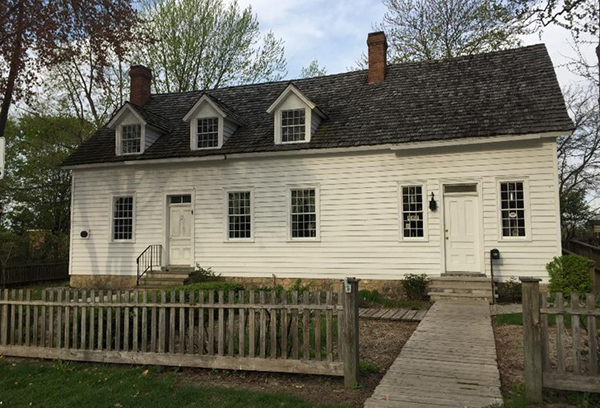Park House National Historic Site

© J. A. Cousineau, Parks Canada, 2017
Park House, an 18th-century dwelling located on the commercial main street of Amherstburg, Ontario, is considered one of the oldest houses in the region. The precise date of its construction is unknown, but it has long been contended that this combined dwelling and warehouse were floated down the Detroit River to Upper Canada by its Loyalist owners when Detroit was handed over to the Americans by the British in 1796. Park House has a long association with fluctuations in the economic history of the transborder region in Southern Ontario. Its early use by transplanted Detroiters and transformation by the Park brothers in the context of the local shipping industry attest to the history of settlement around Windsor, where colonial power struggles were evident not only in fluctuating borders but also in the architecture and landscapes of the region. A rare example of a once-common colonial building type found in settlements and fur-trading posts across colonial North America, its asymmetrical design, center-passage plan, and French-framed grooved post construction are rooted in a common French-Canadian vernacular architectural language.
Located on a large lot bordering the Detroit River, Park House was owned by groups or individuals involved in river-based trade between the 1790s and the mid-19th century. It was used by relocated Detroit merchants during the closing days of French-British fur trade, around the time the international border with the United States was first demarcated. In 1823, it was purchased by the Park brothers, who transformed the house for use in the local shipping industry. Between 1881 and 1936, the house served as the home of local physician Theodore Park, who worked out of the house and added a wing for his offices.
Park House features a variant on "pièce sur pièce" construction known as "poteaux en coulisse" (grooved post). The pièce sur pièce method of construction, in which squared horizontal members are closely placed one above the other, was once an important feature of the landscape of New France. The technique involves vertical corner and wall posts that are mortised in order to receive the tenoned ends of horizontal fill logs, which slide down one atop the other. "Pièce sur pièce" spread across the country with the fur trade, through the work of skilled artisans.
In the heart of the oldest region of permanent French settlement in Ontario, Park House is evidence for the mobility of the French-descended population as the French Regime drew to a close and Upper Canada emerged. Through its architecture, Park House tells the story of the traders and artisans who populated the Windsor region. In 1972, when the building was moved to its current site, the interior wall structure of the building was revealed. It has remained so since, evidence of how French artisans brought an ingenuity in construction that allowed them to adapt older techniques to the topography, materials, and climate of a new land.
The National Program of Historical Commemoration relies on the participation of Canadians in the identification of places, events and persons of national historic significance. Any member of the public can nominate a topic for consideration by the Historic Sites and Monuments Board of Canada.
- Date modified :